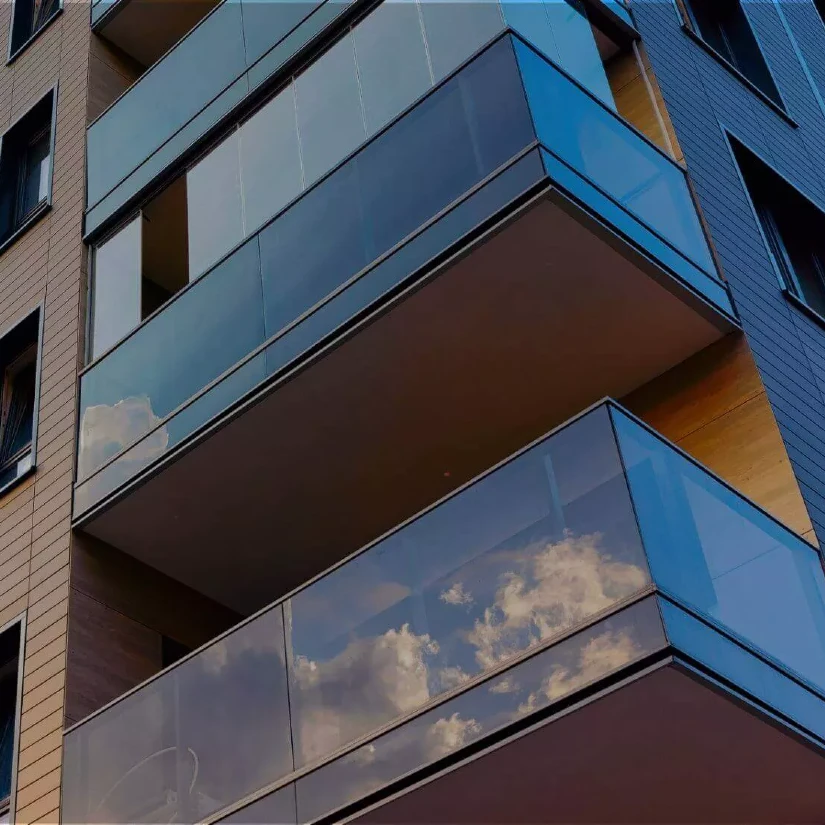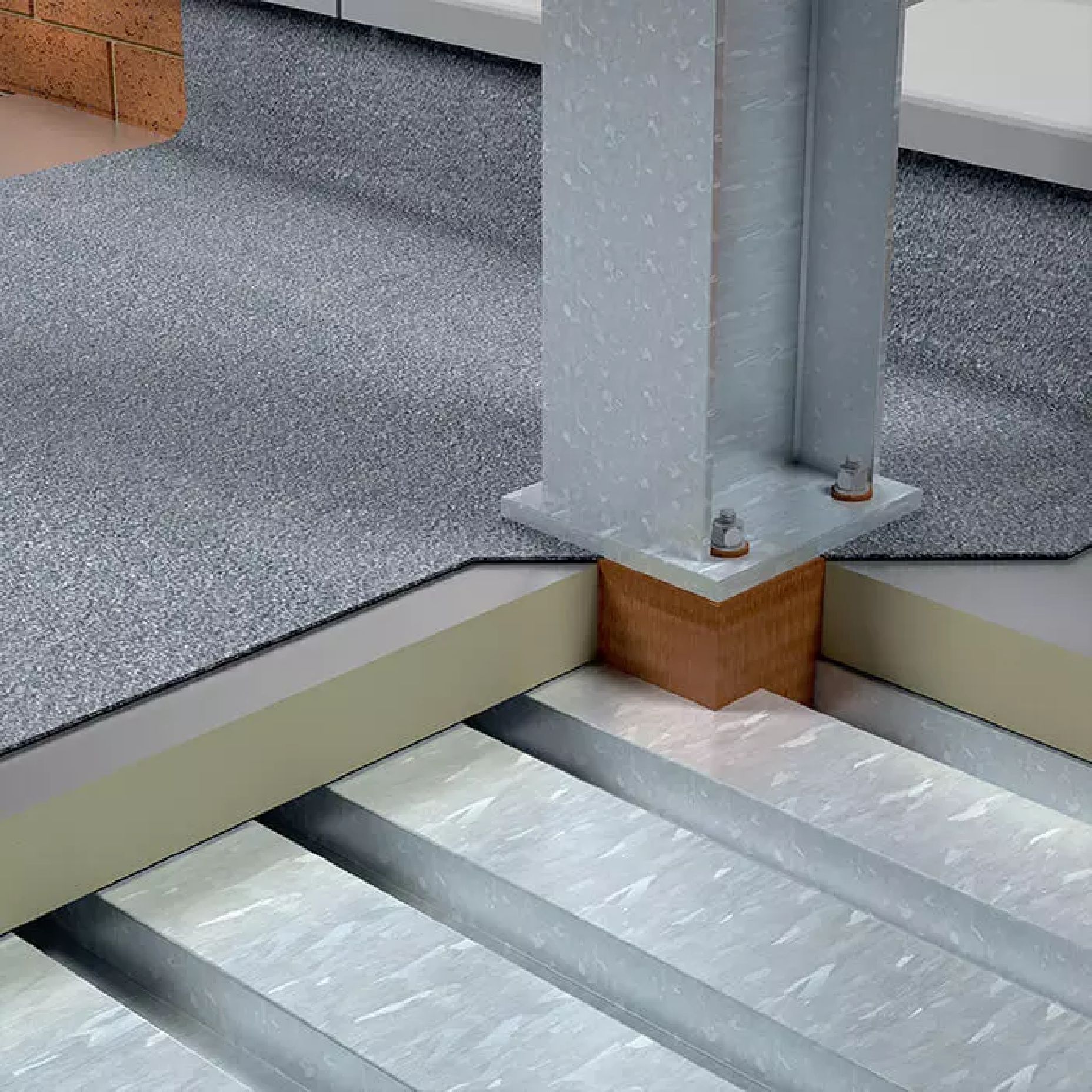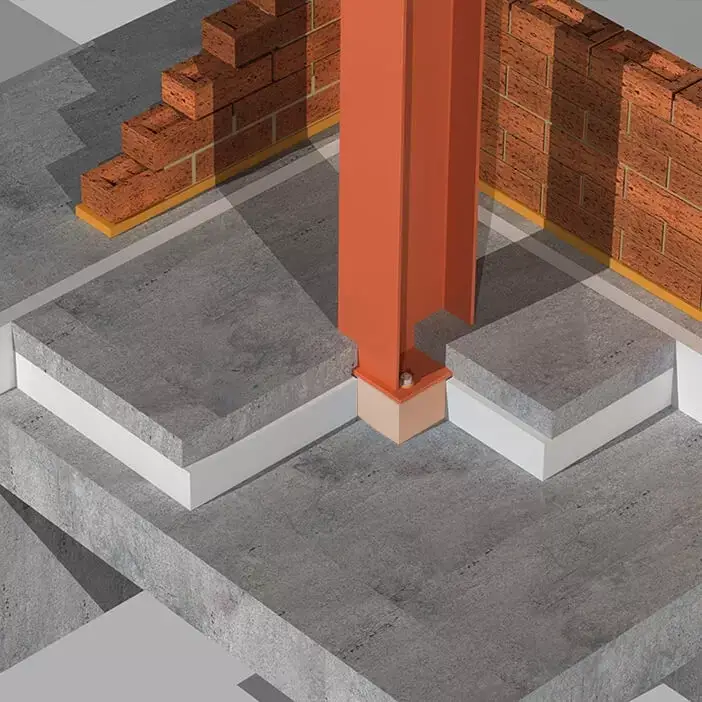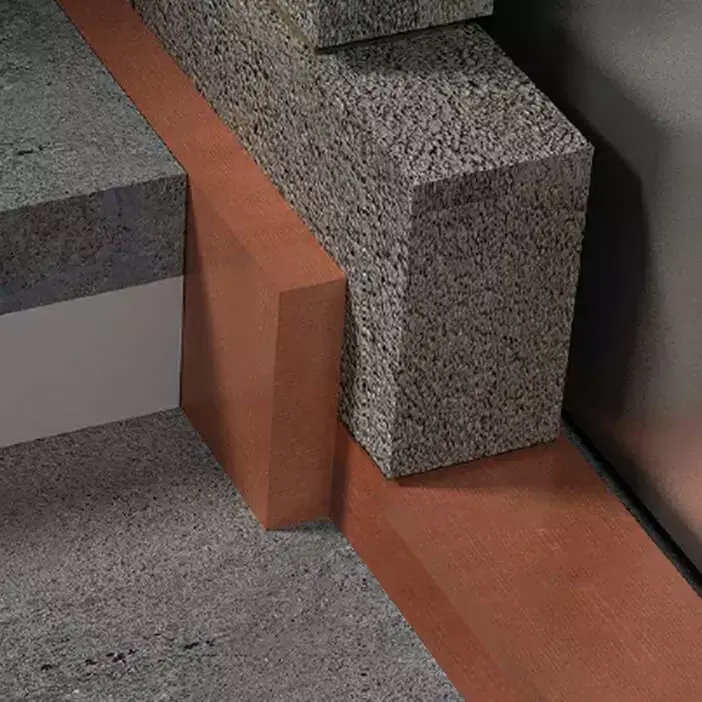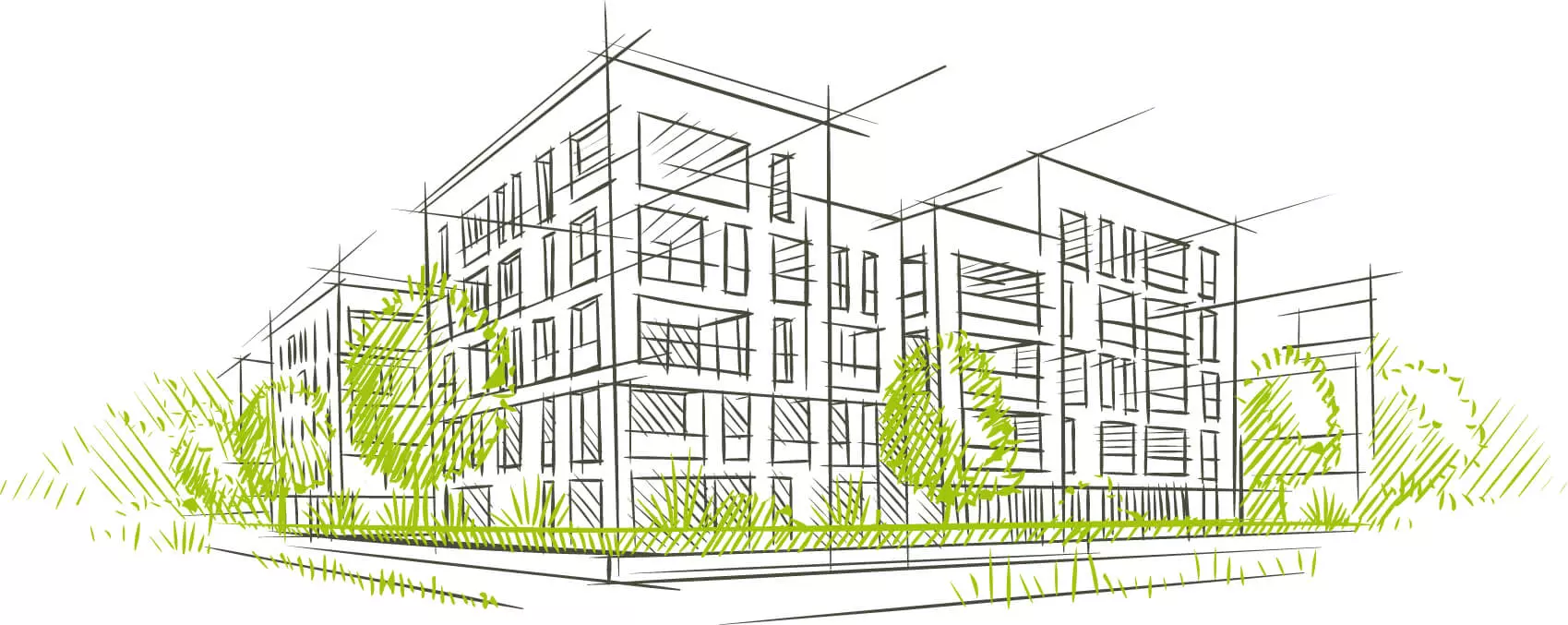Structural Thermal Breaks Enhance Sustainability
In today’s world, where energy efficiency and sustainability are paramount concerns, the construction industry is continually seeking innovative solutions to enhance building envelope performance. One such groundbreaking technology that has gained increasing attention is the use of structural thermal breaks.
These intelligent components play a pivotal role in minimising heat transfer and thermal bridging within a building’s envelope, leading to improved energy efficiency, reduced environmental impact, and enhanced occupant comfort. In this blog post, we will explore the concept of structural thermal breaks, types, their benefits, and their significance in creating a more sustainable future for construction.
Material-based breaks
High-density polyurethane foam thermal breaks exhibit superior thermal performance and high compressive strength. They are ideal for use in slabs, roofs and other load-bearing applications, providing both insulation and structural support. Armatherm™ 500 structural thermal break material is a high strength, thermoset polyurethane manufactured in several densities which can support high loads and has a selection of four grades of material with different compressive strength capabilities.
Reinforced fibreglass thermal breaks offer excellent thermal insulation properties. They are lightweight, non-corrosive, and easy to install, making them a popular choice for facade connections and balcony application. ArmaGirt™ Z Girt is an example of a fibreglass thermal break, it is the ideal product for furring exterior walls on a new/existing masonry or steel stud backing. Armatherm™ Z-girts were developed to reduce heat lost in the building envelope while increasing the effective R-value of the total wall assembly.
Phenolic foam thermal breaks possess exceptional fire resistant and low smoke emission properties. They are commonly used in situations where fire safety is a primary concern, such as fire-rated walls and partitions. The Armatherm™ FRR thermal break material can support high loads and has great mechanical properties. The material is fire resistant making it the ideal material for use in structural steel and façade thermal break connections.
Isolated connections
By inserting isolated materials into steel members, such as beams and columns, thermal bridging in steel structures can be reduced. This method is prevalent in commercial and industrial buildings which more often than not, feature steel framework.
In reinforced concrete structures, isolators or disconnectors are installed to separate concrete elements like slabs and walls. This helps to maintain energy efficiency and prevents temperature fluctuations. With the weight properties of concrete, this is where a high-load bearing thermal break would be most suitable.

Hybrid thermal breaks
Hybrid thermal breaks are advanced building components that combine the principles of material-based and isolated connection thermal breaks to provide enhanced thermal performance and structural support. These innovative solutions are designed to address thermal bridging more effectively and optimise the energy efficiency of buildings. Hybrid thermal breaks are gaining popularity in the construction industry due to their versatility and ability to cater to specific building requirements. A typical example of a hybrid thermal break is the use of a combination of insulating material and isolators to minimise heat transfer effectively. The Armatherm Z girt mentioned earlier is a prime example, while its primary aim is to reduce heat lost in the building envelope, it also increases the effective R-value of the total wall assembly.
One of the most significant advantages of structural thermal breaks is their contribution to enhanced energy efficiency in buildings. By reducing heat transfer and thermal bridging, these components help maintain a more stable indoor temperature, reducing the need for heating and cooling. As a result, buildings with thermal breaks require less energy to maintain comfortable interior conditions, leading to lower energy consumption and decreased utility costs. The inside temperatures are more likely to stay at an enjoyable temperature for longer, instead of needing to reach for costly heating or cooling methods.
Reduced energy consumption translates to lower heating and cooling expenses for building owners and occupants. With less heat loss during cold months and reduced heat gain during hot months, buildings with structural thermal breaks enjoy improved thermal performance year-round.
Thermal breaks help maintain higher surface temperatures on the interior side of building components, reducing the risk of condensation formation. Thermal bridges (or cold bridges) can easily cause cold spots on interior walls, where condensation will appear when alongside warm inside temperatures. By reducing the chances of condensation occurring, the potential for mould growth, material degradation, and other moisture-related issues is significantly reduced too, contributing to a healthier indoor environment.
By eliminating thermal bridging and cold spots near connections and building elements, structural thermal breaks create a more comfortable and consistent indoor environment. Occupants experience fewer temperature fluctuations, leading to increased comfort and satisfaction within the building.
Thermal bridging can lead to localised stress and temperature-related wear on building components, potentially compromising their structural integrity over time. With the use of structural thermal breaks, the stress on the building’s structure is reduced, extending the lifespan of critical building elements and minimising maintenance and repair costs.
Sustainability and green building certifications
Incorporating structural thermal breaks aligns with sustainable building practices and green design initiatives. Buildings featuring these energy-saving components are more likely to achieve green building certifications. They also work towards eradicating the need for costly renovations to improve efficiency in the future.
As buildings account for a significant portion of global energy consumption and greenhouse gas emissions, implementing structural thermal breaks can contribute to a reduced carbon footprint. By optimising energy use, these components support environmentally responsible construction and operation practices.
Structural thermal breaks come in various forms, offering designers flexibility in their application. They can be customised to suit different building types, architectural styles, and structural configurations, allowing for seamless integration into diverse construction projects.
Many building codes and energy efficiency regulations now emphasise the importance of addressing thermal bridging. By incorporating structural thermal breaks, builders and developers can comply with these requirements and ensure that their projects meet the necessary standards.
By embracing structural thermal breaks and other energy-efficient solutions, the construction industry fosters a culture of sustainability and responsible building practices. This cultural shift ultimately leads to a more sustainable and environmentally conscious future for the built environment.
Structural thermal breaks are used at connections between the building facade and the main structure. By interrupting thermal bridging at these crucial points, they help maintain a consistent indoor temperature, reduce energy consumption, and prevent condensation issues.
Roofs and walls are common areas of thermal bridging. Structural thermal breaks at roof-to-wall connections ensure that heat loss or gain is minimised, contributing to improved energy efficiency and thermal performance.
Balconies are notorious for creating thermal bridges between the interior and exterior of a building. Thermal breaks in balcony connections help reduce heat transfer, preventing discomfort for occupants and enhancing the overall energy efficiency of the building.
Integrating structural thermal breaks at slab edges and penetrations, such as around windows and doors, helps maintain a continuous thermal barrier. This prevents localised heat loss or gain, creating a more comfortable indoor environment and reducing heating and cooling costs
Parapets and canopies can act as thermal bridges if not adequately addressed. Structural thermal breaks in these areas minimise heat transfer and help maintain the thermal integrity of the building envelope.
Sustainability and green building certifications
Innovations in material science have led to the development of new and improved materials for structural thermal breaks. Manufacturers are now utilising cutting-edge insulating materials, such as aerogels and vacuum-insulated panels (VIPs), which offer incredibly low thermal conductivity. These high-performance materials provide even more effective thermal separation, reducing heat transfer and thermal bridging to an unprecedented level.
Aerogels, in particular, are highly porous and lightweight materials with remarkable insulating properties. When incorporated into thermal breaks, they offer excellent thermal resistance without adding significant weight or thickness to the building envelope. This allows architects and engineers to achieve superior energy efficiency while maintaining sleek and modern designs.
Prefabrication techniques have made significant headway in the construction industry, and the same applies to structural thermal breaks. Manufacturers now offer prefabricated thermal break modules and profiles that can be easily installed on-site. These ready-to-use solutions reduce construction time, minimise installation errors, and enhance overall building quality.
Furthermore, many manufacturers offer customisable thermal breaks tailored to specific project requirements. Engineers can collaborate with manufacturers to create thermal breaks that match the building’s unique structural configurations, ensuring an optimal fit and performance. This level of flexibility allows for seamless integration into various building elements, such as connections, façades, and roofing systems.
Another significant innovation in structural thermal breaks is the integration of load transfer capabilities within the thermal break system. Engineers can now design thermal breaks that not only provide thermal separation but also transfer loads between building components. This integration ensures structural stability while still effectively minimising thermal bridging.
Integrated load transfer and thermal break systems are particularly beneficial for building elements like façades and balconies, where both thermal performance and structural support are crucial. This approach optimises the use of materials and streamlines the design process, resulting in efficient and cost-effective solutions.
Continuous insulation systems have emerged as a game-changer in the battle against thermal bridging. These systems provide uninterrupted thermal insulation across the entire building envelope, ensuring a consistent thermal barrier. Whether in masonry construction, curtain walls, or other façade systems, continuous insulation effectively reduces heat loss and gain, resulting in remarkable improvements in energy efficiency.
Continuous insulation solutions, when combined with other innovations like customisable modules and advanced insulating materials, create a highly efficient thermal envelope that complies with the most stringent energy codes and certifications.
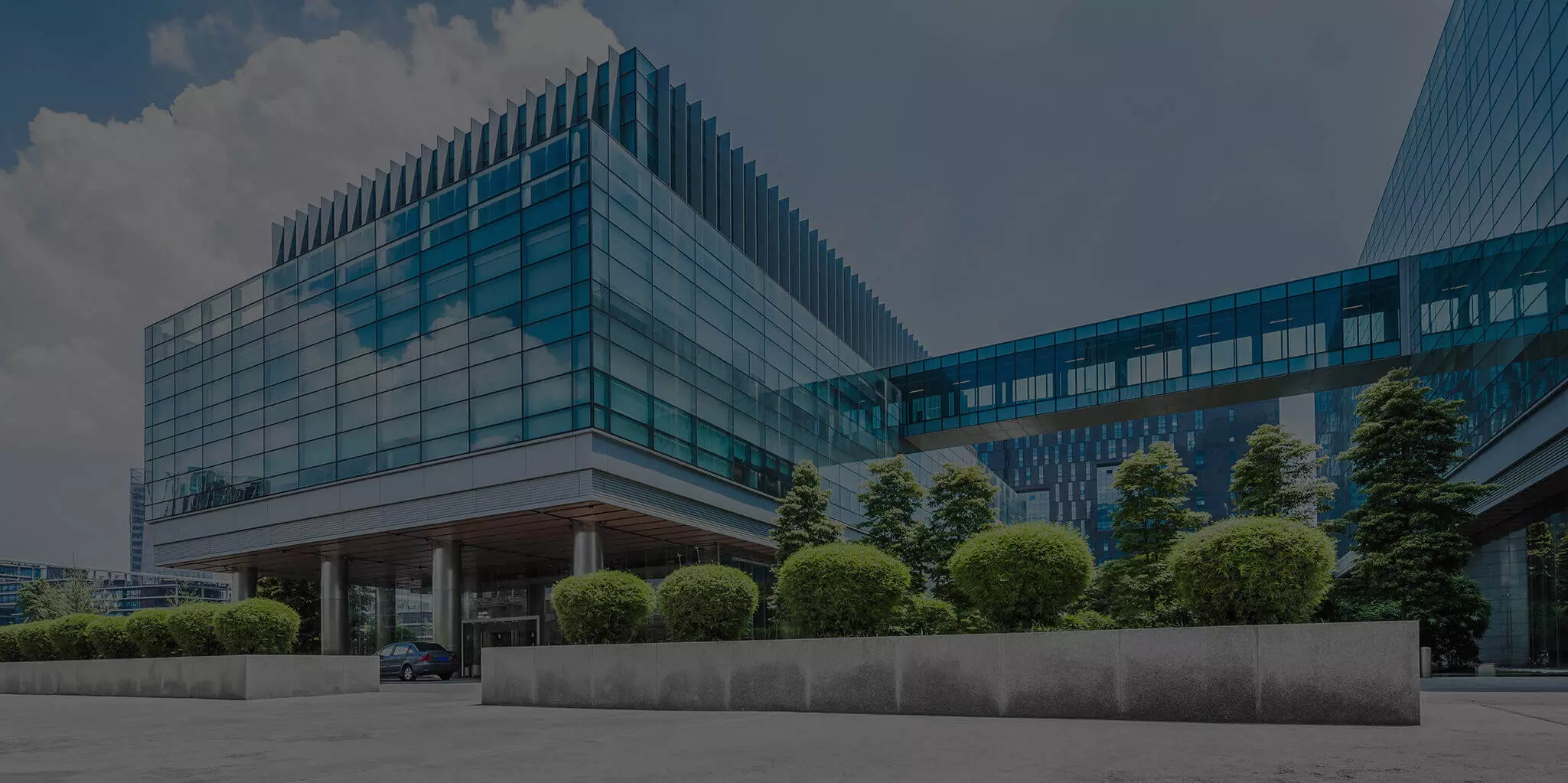
The significance of structural thermal breaks in creating a sustainable future
The importance of structural thermal breaks in creating a sustainable future cannot be overstated. As we strive to combat climate change and reduce our ecological footprint, these intelligent components play a pivotal role in advancing energy-efficient and environmentally responsible construction practices. By mitigating thermal bridging, enhancing energy efficiency, and promoting green building certifications, structural thermal breaks contribute to a greener, more sustainable built environment. Their impact extends beyond energy savings, creating healthier indoor spaces and reducing environmental impact.
As architects, engineers, specifiers and construction professionals take the time to fully understand and learn more about these innovations, they take crucial steps towards building a sustainable future for generations to come. The adoption of structural thermal breaks marks a transformative shift in the construction industry – one that prioritises both environmental preservation and economic prosperity. As the construction industry continues to embrace sustainable solutions and work towards a more secure future for constructions, structural thermal breaks are poised to become an indispensable feature in building design, promoting a greener and more energy-efficient future.
To learn more about enhancing building efficiency and sustainability and Armatherm’s thermal break materials, please contact Armatherm’s dedicated team using the details on our contact us page.

